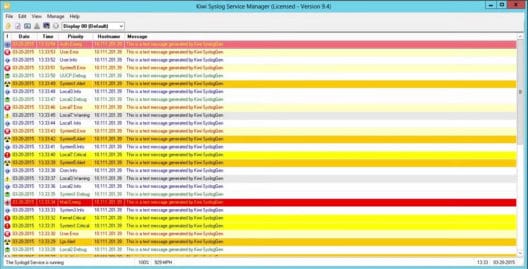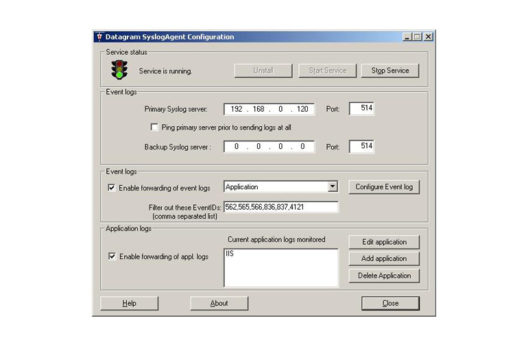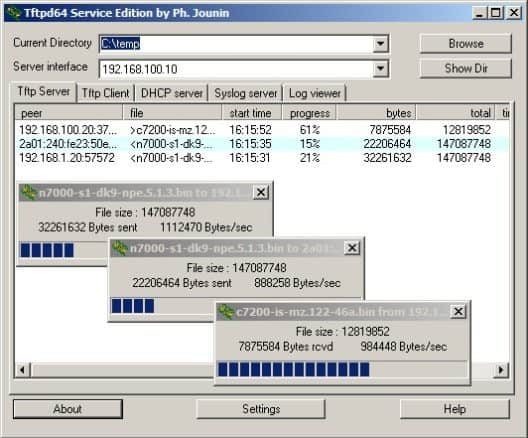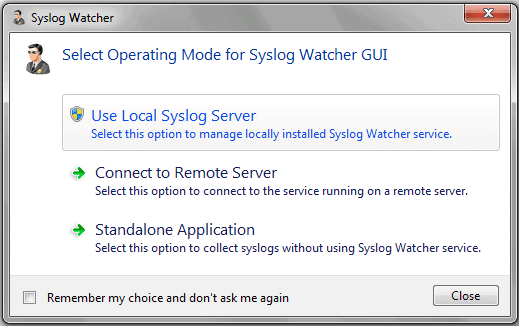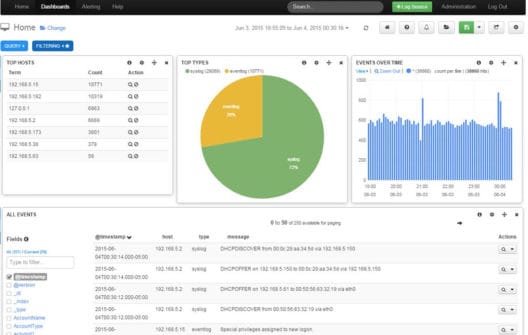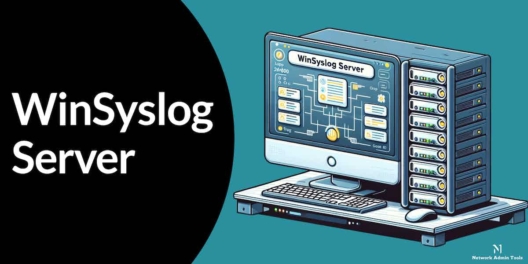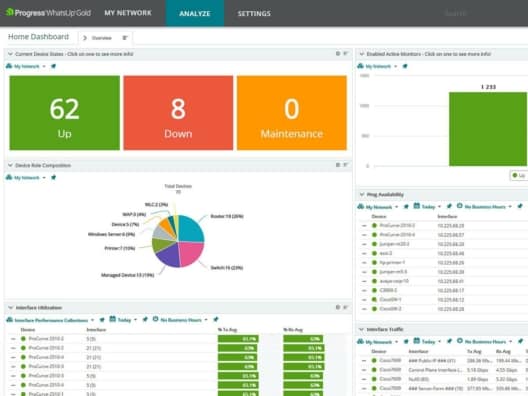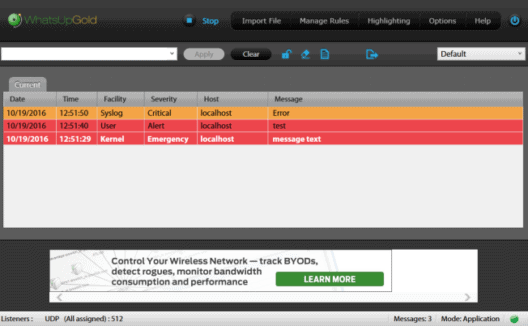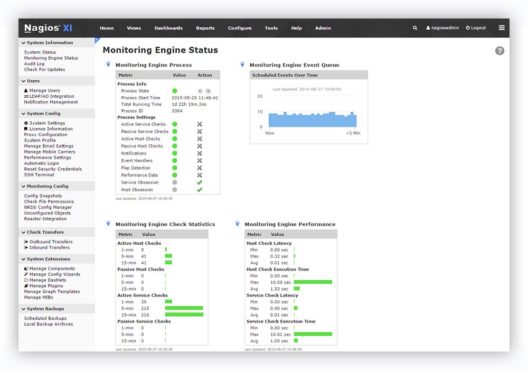Kiwi Syslog Server has been around for quite some time and is one of the most well known and Best solutions for syslog event management and consolidation. Known for its easy installation and setup, configuration is a breeze with kiwi and they even offer a free version of the software that allows up to 5 […]
SolarWinds Kiwi Syslog Server
WordPress Security and Available Plug-ins
WordPress is one of the most popular website platforms for bloggers and businesses as of 2017. It is easy to use and flexible as well as highly supported by developers and designers, but its security should also be considered. WordPress Security Issues It is a sad fact that a great many websites have been hacked […]
Datagram SyslogServer Suite Review
Datagram’s SyslogServer, SyslogView, and SyslogAgent are three software kits that are part of the Datagram SyslogServer Suite. They are capable of log collection, filtering, alerting, and database storage / log display. This article will cover the pricing, main features, system requirements, and where to download this software. See all FREE SYSLOG Servers HERE Pricing There […]
TFTPD32 Syslog Server Review
Tftpd32 (current version 4.52) is a free toolkit program containing various different socket services. One of these is Syslog collection, and this article will briefly cover the Syslog aspects of Tftpd32. See All FREE SYSLOG Servers Price Tftpd32 is Free, and open source, for both personal and commercial use. Features Syslog collection: Tftpd32 (and 64) […]
SnmpSoft Syslog Watcher
SnmpSoft Syslog Watcher (Current version 4.8.6) is a log collection and notification software for network devices. It allows Network and System Administrators to store logs in one central location, and parse through a multitude of entries with ease. This article will briefly highlight the pricing, main features, and system requirements for the software. Pricing SnmpSoft […]
Nagios Syslog Server
Nagios Log Server is an expansive log collection and parsing software that allows System and Network Administrators to pool logs from various systems in one centralized location. It allows for rapid queries and filtering, as well as reporting and real-time data presentation. Pricing There are 5 main pricing plans available for Nagios Log Server. They […]
WinSyslog Server
WinSyslog (current version 13.3b) is a centralized log collection server, capable of receiving Syslog messages from various network devices. This article will cover the costs, main features, and system requirements for the software. WinSyslog Why do we recommend it? WinSyslog stands out for its comprehensive set of features including syslog collection, active status monitoring, and […]
Progress WhatsUp Gold Review
Progress WhatsUp Gold is a network performance monitor that can be expanded to supervise other IT assets. The base package also includes routines for supervising servers and cloud resources. Some great features in the WhatsUp Gold system include autodiscovery of network devices, an automated network topology mapper, and performance alerts. The features of this system […]
WhatsUp Gold Syslog Server
WhatsUp Gold (Current Version 1.0.4251) is a Syslog collection application, that can collect Syslog messages from devices on the network and create/send alerts. It is capable of filtering, importing, and managing syslog entries. Pricing WhatsUp is completely Free. Features Log collection: WhatsUp is capable of collecting logs from any device capable of sending syslog messages […]
Nagios XI Review
Nagios XI is a network monitoring, reporting, and alerting software for network / systems administrators. This article will briefly cover the pricing, main features, system requirements, and official links for the software. Why do we recommend it? Nagios XI offers a highly customizable web interface and diverse monitoring capabilities, allowing it to adapt to various […]
TCP and UDP Service Listing
Here is a text version of /etc/services that might be useful for determining whether a port is being used by a trojan, etc: TCP and UDP Service Listing
Adding an IP Address to an Interface With Red Hat and CentOS
There is some apparent voodoo on what, exactly, is needed to add an IP address to an interface using Red Hat style scripts. We have tested this on Red Hat Enterprise 3 and CentOS 4, and it appears that the convention is quite forgiving. This makes sense, really, since if you hose up these interfaces, […]
Changing the IP Address on a Cisco Router With an IP Conflict
If you wish to bring up a Cisco router that has an IP address that conflicts with existing hosts on your network, there are a variety of ways to change it. We just happened to have a crossover network cable sitting on our work bench, and a GNU/Linux host on the LAN with an extra […]
Using OS Identification with Nmap
Nmap can be used to fingerprint operating systems. Here is a typical session: [root@srv-1 usr-1]# nmap -O –min_rtt_timeout=6000 10.50.100.1-80 Starting nmap 3.70 ( http://www.insecure.org/nmap/ ) at 2006-05-05 12:49 PDT Interesting ports on 10.50.100.1: (The 1656 ports scanned but not shown below are in state: closed) PORT STATE SERVICE 22/tcp open ssh 111/tcp open rpcbind 6000/tcp […]
Tunnelling Through a Gateway With SSH
Here is a diagram of three servers: What we want to do is create a tunnel with SSH so that 10.50.101.100 can go directly to 10.50.100.72. There is no routing between the networks. The box in between is dual-homed and acting as a security buffer between the 10.50.100 and 10.50.101 networks. After we set up […]
Maximum Number of Sockets and FD_SETSIZE
There is a limit on the number of concurrent socket connections that an application can accept in BSD, Windows, and other operating systems. This is set at compile time, but it can be overridden. Here is a discussion of this limitation by Microsoft, and here is further discussion. One application that is sticking this on […]
Remote Console Server and Web Administration Tool for NT
Two very useful remote administration tools are the Remote Console Server and the Web Administration tool. Both of these tools come on the NT 4.0 Server resource kit CD. To install the Remote Console, go into control panel -> network -> services tab -> add -> remote access service, and point to the ..\..\netadmin\rconsole directory […]
Installing and Using Telnet Service for Windows NT
[Ed. Note: This is a wee bit dated. SSH is widely available for Windows now, and should be used instead of telnet for administration. Still, telnet can be handy for testing. For an updated version of this for Windows 2000, see this article.] We wrote a tip about using IIS and rconsole to remotely manage […]
Windows 2000 Terminal Services/Administration
With Windows 2000 terminal services, it is quite a bit easier to administer your servers remotely. Make sure you have terminal services installed. We chose the option to use terminal services for administration only. On the server side, format a couple of diskettes. Run Start>Programs>Administrative Tools>Terminal Services Client Creator. You will see a screen like […]
Using Rdesktop To Access Windows Terminal Services From A GNU/Linux Client
We usually use VNC to administer our Windows servers from our GNU/Linux workstations. Rdesktop allows you to access Terminal Services natively from GNU/Linux. This is a lot easier than running the Terminal Services client from Vmware like we did in this article. Sheeesh… 🙂 We grabbed version 1.2.0 of rdesktop from here. While you are […]

